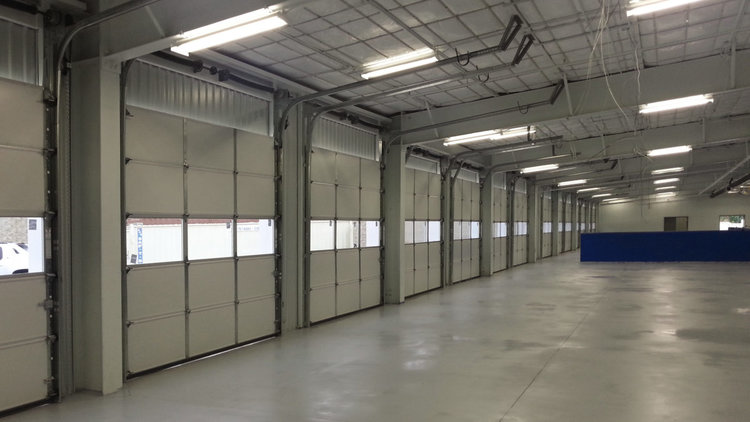Garage door sensors are one of those small parts that do a big job. These little devices help keep your family, pets, and belongings safe every time your garage door opens or closes. Let’s break down what garage door sensors do, how they work, and how you can align them if they get out of place.
What Is a Garage Door Sensor?
A garage door sensor is a safety feature that stops your garage door from closing if something is in the way. These sensors are usually located near the bottom of the garage door track, just a few inches off the ground.
The sensors work in pairs. One sensor sends out a beam of light, and the other receives it. If that beam is broken—by a bike tire, a pet, or even your foot—the door stops moving or reverses. It’s a simple but powerful safety system.
Garage door sensors are required by law in most areas for automatic garage door openers. They became standard in the early 1990s after safety regulations were introduced. If you have an older garage door opener without sensors, it’s time for an upgrade.
Why Garage Door Sensors Matter
- Safety First: They help prevent accidents and injuries.
- Protects Your Property: They stop the door from crushing bikes, toys, or tools.
- Required By Law: Most modern building codes require garage doors to have safety sensors.
- Peace of Mind: You won’t have to worry if someone or something accidentally gets in the way.
If your garage door won’t close and just keeps going back up, it might be the sensors acting up. But don’t worry, we’ll show you how to fix that.
How Do Garage Door Sensors Work?
Garage door sensors use something called infrared light. One sensor sends this invisible light across the door to the other sensor. When the light beam is clear, the door can close. If something breaks the beam, the sensors send a message to stop the door.
Sensors are wired into the garage door opener and usually have small lights on them:
- Green Light: Usually means the sensor is working.
- Red or No Light: Could mean the sensor is out of line or not getting power.
The sensors are low-voltage and safe to touch. They don’t carry enough electricity to shock you, but they do need clean power and proper alignment to work right. Some advanced models also come with self-diagnostic lights or error codes, making troubleshooting easier.
Signs of Misaligned or Faulty Garage Door Sensors
Here are some common signs:
- The garage door starts to close but then reverses.
- The garage door opener light blinks repeatedly.
- One or both sensor lights are off or blinking.
- You hear a clicking sound when you try to close the door.
- You can close the door only by holding the wall button.
If your garage door behaves strangely, it’s a good idea to check the sensors first before assuming the opener is broken.
How to Align Garage Door Sensors
Good news: You can often fix misaligned sensors yourself. Here’s a step-by-step guide.
Step 1: Check for Obstructions
Make sure nothing is blocking the sensors. Clear away leaves, dirt, or cobwebs. Even a small object or buildup on the lens can break the beam.
Step 2: Inspect the Sensor Lights
Look at the small LED lights on each sensor. If both are on and steady, they are aligned. If one is off or blinking, it needs adjusting.
Step 3: Loosen the Sensor Bracket
Use a screwdriver to loosen the wing nut or screw holding the sensor in place. You don’t need to remove it, just loosen enough so the sensor can move.
Step 4: Adjust the Sensor
Gently move the sensor up, down, or side to side until the LED light turns solid (not blinking). Both sensors need to be pointing directly at each other.
Step 5: Tighten the Bracket
Once the light is steady, tighten the bracket back into place. Be careful not to shift the sensor while tightening.
Step 6: Test the Door
Try closing the garage door. If it shuts smoothly, you did it! If not, repeat the steps or try the tips below.
Extra Tips for Sensor Alignment
- Use a String Level: Tie a string from one sensor to the other. The string should be level, helping you get the perfect line.
- Avoid Sunlight Interference: Direct sunlight can sometimes interfere with infrared sensors. Try shading the sensor or adjusting its angle.
Check for Vibration: If your sensors come loose often, add foam padding behind them to absorb vibration from the door.
Quick Tips for Sensor Maintenance
- Clean the Lenses: Use a soft cloth to remove dust or debris from the lenses.
- Check the Wiring: Make sure the wires aren’t loose, frayed, or disconnected.
- Protect the Area: Keep bikes, tools, and garden gear away from the sensor zone.
- Test Monthly: Place a box in the door’s path and try to close it. The door should reverse. If not, fix the sensors.
Regular maintenance takes just a few minutes but can prevent a lot of headaches.
Can You Replace Garage Door Sensors?
Yes, you can! If cleaning and realigning don’t fix the problem, it might be time to replace the sensors. Most homeowners can do this with basic tools.
Here’s what to do:
- Unplug the opener for safety.
- Disconnect the sensor wires from the opener.
- Remove the old sensors from their brackets.
- Attach the new sensors and connect the wires.
- Align them and plug the opener back in.
- Test the door and check the lights.
Choosing the Right Garage Door Sensors
Not all garage door sensors are the same. Make sure to get ones that match your opener brand and model. Universal sensors exist, but they may not work with all openers.
Look for:
- Compatibility with your opener
- Easy installation instructions
- Good customer reviews
Still not sure? Bring your opener model info to the store or call a pro.
How to tell if a garage door sensor is bad?
If the LED light on one or both sensors is off or blinking, or the door won’t close unless you hold the wall button, the sensor might be faulty.
What does a garage door sensor do?
It stops your garage door from closing if something is in the way, helping prevent injuries and damage.
Can I replace garage door sensors myself?
Yes, with a few basic tools and a little patience, most homeowners can replace their garage door sensors.
How do I reset my garage door sensor?
Unplug the garage door opener for 30 seconds, plug it back in, and check the sensor lights. Realign the sensors if needed and test the door.
Keep Your Garage Door on Track
Garage door sensors may be small, but they play a huge role in keeping everything running safely. A little alignment or cleaning can go a long way in making sure your door works right.
Need help or a professional eye? Call us at (360) 734-5960 or contact OHD Company Bellingham today!





